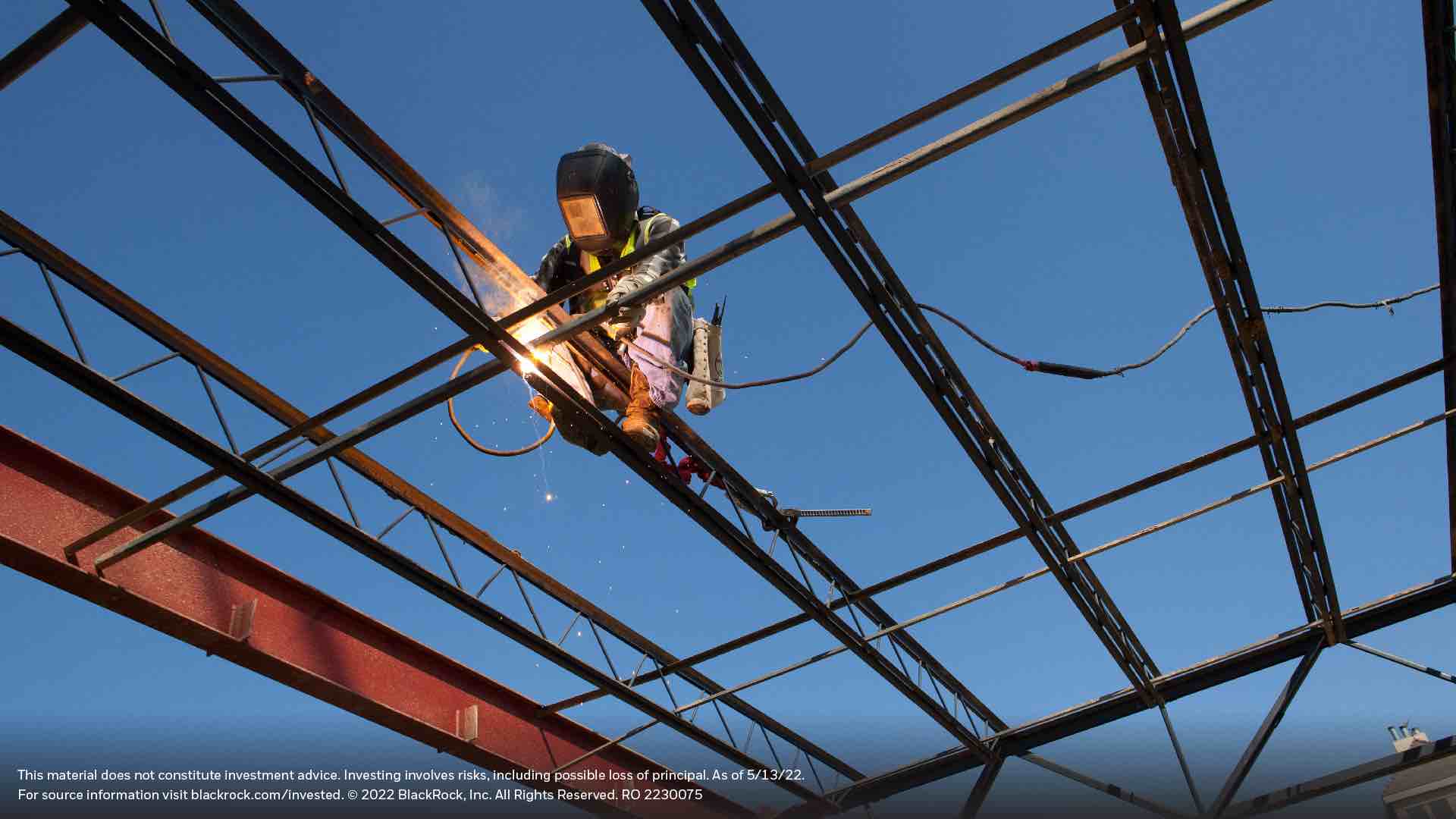| | | | | | | Presented By BlackRock | | | | Axios Markets | | By Emily Peck and Matt Phillips · Jun 21, 2022 | | Tuesday already! It's Matt, and we're almost halfway to the weekend. (Sorry, but it was so insanely nice the last few days, it's hard to pry myself out of the garden.) Below, Emily spotlights an intriguing new program to boost homeownership in Black and Hispanic neighborhoods. I talk about a troubling trend in the recent run of economic data. And we've got Markets' first-ever reader-contributed "1 thing we love." Excelsior! Today's newsletter, edited by Kate Marino, is 950 words, 4 minutes. | | | | | | 1 big thing: Boosting Black homeownership |  Data: U.S. Census Bureau; Chart: Simran Parwani/Axios For more than a year, Black and Hispanic homebuyers have gotten $5,000 in down payment or closing cost assistance from JPMorgan Chase, part of a new program meant to help close the racial wealth gap, Emily writes. Why it matters: If adopted on a wider scale, this kind of targeted program — which specifically tracks lending to borrowers of color, a radical departure — might help increase Black homeownership rates. JPMorgan is the first bank to give it a try. - These types of programs "could provide the kind of homeownership boost to Black communities today that the New Deal provided to white people in the 20th century," write the authors of a February paper published by the Urban Institute.
How it works: The bank created what's known as a special purpose credit program, a policy made possible by the 1974 Equal Credit Opportunity Act that's gaining traction now, especially after federal regulators across several agencies issued a statement on SPCPs in February. - The law prohibits discrimination in lending, but there's a carve-out that allows banks to create these SPCPs for disadvantaged classes of borrowers.
- JPMorgan implemented the program in specific census tracts with majority Black populations. There are 6,700 such areas across the U.S.
- The bank chose this route instead of simply offering the money to Black borrowers because it's tricky to track the race or ethnicity of homebuyers while staying in line with non-discrimination laws.
Potential drawbacks: - Gentrification is a "potential unintended consequence" here, Cerita Battles, the bank's managing director and head of community and affordable lending, said at a recent panel on SPCPs.
- The grants could wind up going to white borrowers seeking to move to Black neighborhoods. She said the bank is closely monitoring the process to avoid this. So far, 57%–60% of the bank's SPCP assistance has gone to Black and Hispanic customers, she said.
- The program could also reinforce already existing housing segregation.
The backstory: The large gap in homeownership rates between Black and white Americans drives a massive wealth gap, which in turn perpetuates inequality, as banks typically want to lend to borrowers who already have money. - "We are deluding ourselves if we believe we will cure centuries of race-based discrimination without targeted measures," wrote the authors of a piece on SPCPs at the National Fair Housing Alliance.
What to watch: In early June, Fannie Mae —a pivotal player in the mortgage market — made SPCPs a central part of a new plan aimed to encourage racial equity in housing. Read the full story. |     | | | | | | 2. Catch up quick | | 🚘 Tesla to cut 10% of salaried workforce. (Bloomberg) ⛽️ Gas price average dips below $5/gallon. (Axios) 🥣 Kellogg to split into three companies. (CNBC) |     | | | | | | 3. An unsettling pattern |  Data: FactSet; Chart: Axios Visuals Recent economic reports have repeatedly fallen short of expectations, suggesting slower growth is here, Matt writes. Driving the news: Friday's report on industrial production failed to match consensus Wall Street forecasts. Factory output declined 0.1% in May. (The forecast was for 0.4% growth.) The big picture: We're beginning to see a pattern. - A Thursday report showed housing starts dropped 14.4% in May, compared to April. (Experts expected just a 0.2% decline.)
- The day before, we learned retail sales unexpectedly dropped 0.3% from April to May. (Forecasts called for a 0.2% gain.)
- And the June 10 Consumer Price Index for May showed inflation worsening: Prices rose 8.6% year over year. (Analysts thought it would be just 8.2%.)
Go deeper: In fact, economic data is now falling short of expectations by more than we've seen since the initial shock of the COVID crisis, according to the Citi U.S. Economic Surprise Index. - How it works: Citi surprise indexes show how economic data compares with consensus expectations.
- Higher numbers mean data has been better than expected; lower numbers, worse.
The bottom line: The Fed is raising rates to slow the U.S. economy and rein in inflation. The slowdown seems to be coming. |     | | | | | | A message from BlackRock | | Invested in the future of communities | | |  | | | | At BlackRock, we are serving the communities that help the country thrive. We are proud to invest in the projects that build our economy, with $20 billion in U.S. roads, bridges and transportation invested on behalf of our clients. Learn more. | | | | | | 4. The friends we lost along the way |  | | | Illustration: Maura Losch/Axios | | | | Remote work may be convenient, but it limits the number of people you meet on the job, a new analysis finds. And that can have downsides for employees and companies, Emily writes. Why it matters: Companies have an interest in making sure employees have a wide network; it fosters collaboration and loyalty. The analysis is another data point in the "go back to the office" camp, espoused by the likes of Elon Musk. Details: Even after a year, those who started a new job in March 2021 had 68% fewer connections inside their companies than their more tenured peers had at a similar juncture in employment, according to the findings. - Researchers looked at data — including emails, Slacks and calendar invites — from 1,300 workers at tech and finance companies in the U.S. and Europe.
The report concludes that this is an issue that stems from "ineffective onboarding." - Offsites might help, too. "The best outcomes come from just taking the team out once every one or two months and doing proper offsites," said Jan Rezab, the CEO of Time Is Ltd., a workplace analytics firm, which released the report.
Emily's thought bubble: As someone who went from working in-person five days a week to working remotely, I'm skeptical that even regular offsites can replace in-office network effects — where you wind up talking to folks with whom you'd never actually work. - Certainly, serendipitous interactions, like the time I made an office best friend because we met in a restroom, are difficult to replicate on Slack and Zoom.
The bottom line: But people sure like to work remotely — so companies will have to find new ways to foster relationships and loyalty. |     | | | | | | A message from BlackRock | | Invested in the future of retirees | | |  | | | | All across the country, people are working hard to build a better future. So, we are hard at work, helping them achieve financial freedom. At BlackRock, we are proud to manage the retirement plan assets of over 35 million Americans. Learn more. | | | | 📩 1 thing a reader loves: Legos! Fredrick Lee, a reader in Inglewood, Calif, writes: With work and the constant barrage of doom and gloom in the world, Legos are the things that I love. It is my mental therapy that gets the creative juices flowing and provides unbelievable decompression chamber for me. Yes, I buy the expensive sets to build and take apart for my own creations, but it feels soooo good to let creativity flow and go. More adults need to get back to those childlike hobbies, it does a mind, body, and soul good. |  | It's called Smart Brevity®. Over 200 orgs use it — in a tool called Axios HQ — to drive productivity with clearer workplace communications. | | | | | | Axios thanks our partners for supporting our newsletters. If you're interested in advertising, learn more here.
Sponsorship has no influence on editorial content. Axios, 3100 Clarendon Blvd, Arlington VA 22201 | | | You received this email because you signed up for newsletters from Axios.
Change your preferences or unsubscribe here. | | | Was this email forwarded to you?
Sign up now to get Axios in your inbox. | | | | Follow Axios on social media:    | | | | | |
Post a Comment
0Comments